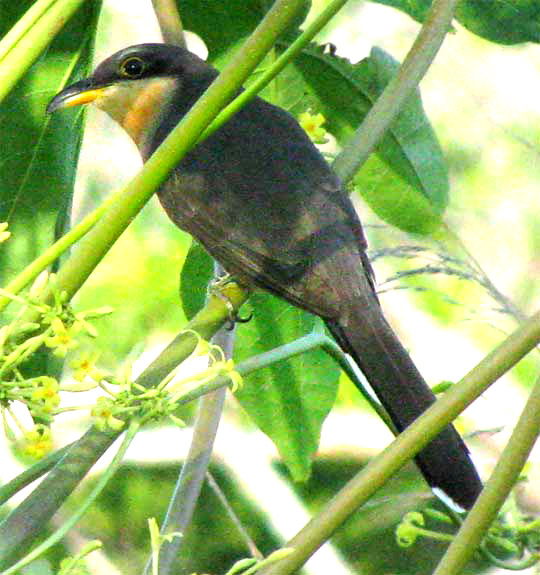Excerpts from Jim Conrad's
Naturalist Newsletter
from the December 22, 2008 Newsletter written at Mayan Beach Garden Resort 20 kms north of Mahahual; Caribbean coastal beach and mangroves, ~N18.89°, ~W87.64°, Quintana Roo state, MÉXICO
MANGROVE CUCKOO
Just about when I was about to give up hope, finally something caught my eye, something good. I'd almost walked right past him because he was being very quiet, lurking in the shadows of a flowering Wild Papaya tree, as shown below:

That's a Mangrove Cuckoo, COCCYZUS MINOR PALLORIS, a denizen of humid tropical lowlands from Mexico to northern South America, plus there's a population in southern Florida. A frontal view would have shown large, white spots on the tail's black undersurface, like a North American Yellow-billed Cuckoo's. The throat's buff color continues onto the underparts.
In the picture you can see two features typical of members of the Cuckoo Family. First, members often but not always have slightly decurved bills. More diagnostic is the fact that cuckoos look like regular songbirds, or passerines, but their feet are zygodactyl -- have two toes projected forward and two backwards, instead of three forward, one backward, typical of songbirds. In the picture you can barely make out a foot's zygodactylness.
At my previous two locations we saw that Mangrove Cuckoo's aren't found exclusively next to mangroves. In the Yucatan they extend a good distance into the interior.